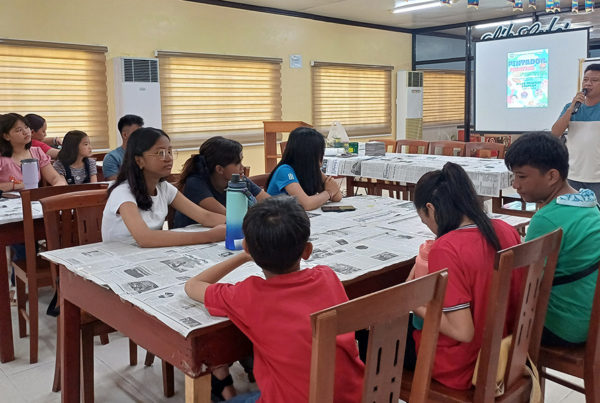Sual is home to model bangus fish cages
SUAL, Pangasinan—Definitely, the “strictly no fish pens policy” here is paving the way for the boost in bangus (milkfish) industry in this coastal municipality which has not experienced even a single fish kill occurrence over the years.
Enough distance from one cage to another, proper feeding management, correct stocking density, and regular water quality monitoring are some of the keys behind the bangus growers’ success here, Florencia Guanzon said in an interview Thursday.
Other bangus-producing coastal towns/city in Pangasinan had their share of multi-million peso losses in recent times, like Anda, Bolinao, Binmaley and Dagupan City and had hogged the headlines because of its tremendous impact to the bangus industry.
It may be recalled that in 2002, a major fishkill happened in Bolinao town with estimated losses of P100 million, another in 2007 that affected Dagupan City, Bolinao and Anda with P32.7 million estimated losses and in June 2010, Bolinao, Anda, Binmaley and Dagupan suffered another fish kill with estimated damages of P95.5 million.
“We are very thankful we haven’t experienced fish kill because we really give full teeth to our fishery ordinances particularly on no fish pen policy,” Guanzon said.
She added this has been going on since the time of then President Fidel Ramos.
At present, there are 720 units of fish cages floating in the coastal waters in Barangays Bacquioen, Pangascasan and Cabalitian where most of these structures are located, she said.
Bangus growers harvest their produce twice every one year and a half, giving enough time, too, to empty their cages before another set of stocks are raised again.
Every one unit of circular fish cage, about 16 meters in diameter, can have a stocking density of 40,000 to 45,000 pieces of bangus so they could have enough space for proper dissolved oxygen, she said.
Bangus growers here also observe clustering of their fish cages with proper navigational lane, waterways and correct distance from column to rows (30 meters), rows to unit (20 meters), unit to unit (10 meters).
Clusters are about 50 meters away from each other.
They also have designated areas for fish cages called mariculture zone area.
Because of their successful implementation of their policies, bangus growers enjoy high yield and profit. Last year, the volume of production of their bangus was about 276 metric tons, Guanzon said.
These are brought to the Malabon and Navotas markets and the Bureau of Fisheries and Aquatic Resources (BFAR) had accredited their produce for local and international markets.
WORTH EMULATING
Simple yet practical, says Dr. Westly Rosario, BFAR center chief based in Dagupan City, of the policies adopted in Sual town for its bangus industry.
He said these are positive policies of a local government unit to improve its area that can also be adopted by other bangus producing areas in Pangasinan like Dagupan City, Binmaley, Anda and Bolinao.
Rosario said it is noteworthy that Sual has sustained its bangus industry with zero fish kill incidence. The one big difference is the town has good policy, he said.
In Sual, corporations can own a maximum of 50 units of fish cages while individual owners can have a maximum of 15 cages.
No wonder that fish cages have almost uniform design, including the nipa huts where the bangus raisers stay at, he said.
Rosario also noticed the town’s coastal area has consistently good dissolved oxygen (DO) level of 8 parts per million (ppm), higher even than the normal 5 ppm for ideal growth rate of bangus.
The other bangus-producing areas always have critical DO level every time there is neap, he said.
Rosario explained that neap tide is a period in a month wherein tidal fluctuation is very minimal and that no fresh and oxygenated water flows in estuaries where the fish pens, cages and ponds are located.
Neap tide which is a natural phenomenon that results in very low level of DO which causes stress to fish stocks and can lead to fish kill, he said.—Eva Visperas
Share your Comments or Reactions
Powered by Facebook Comments









